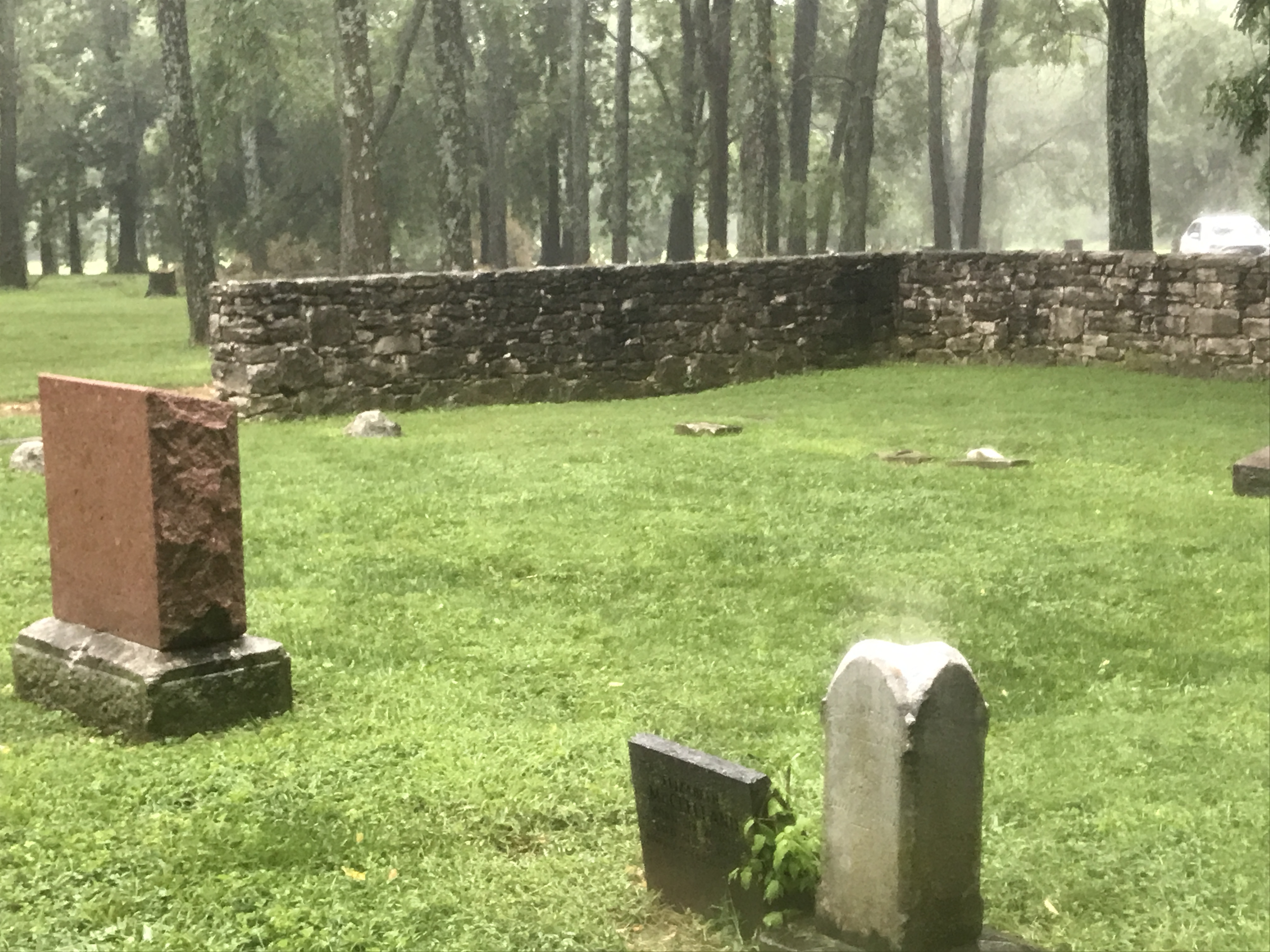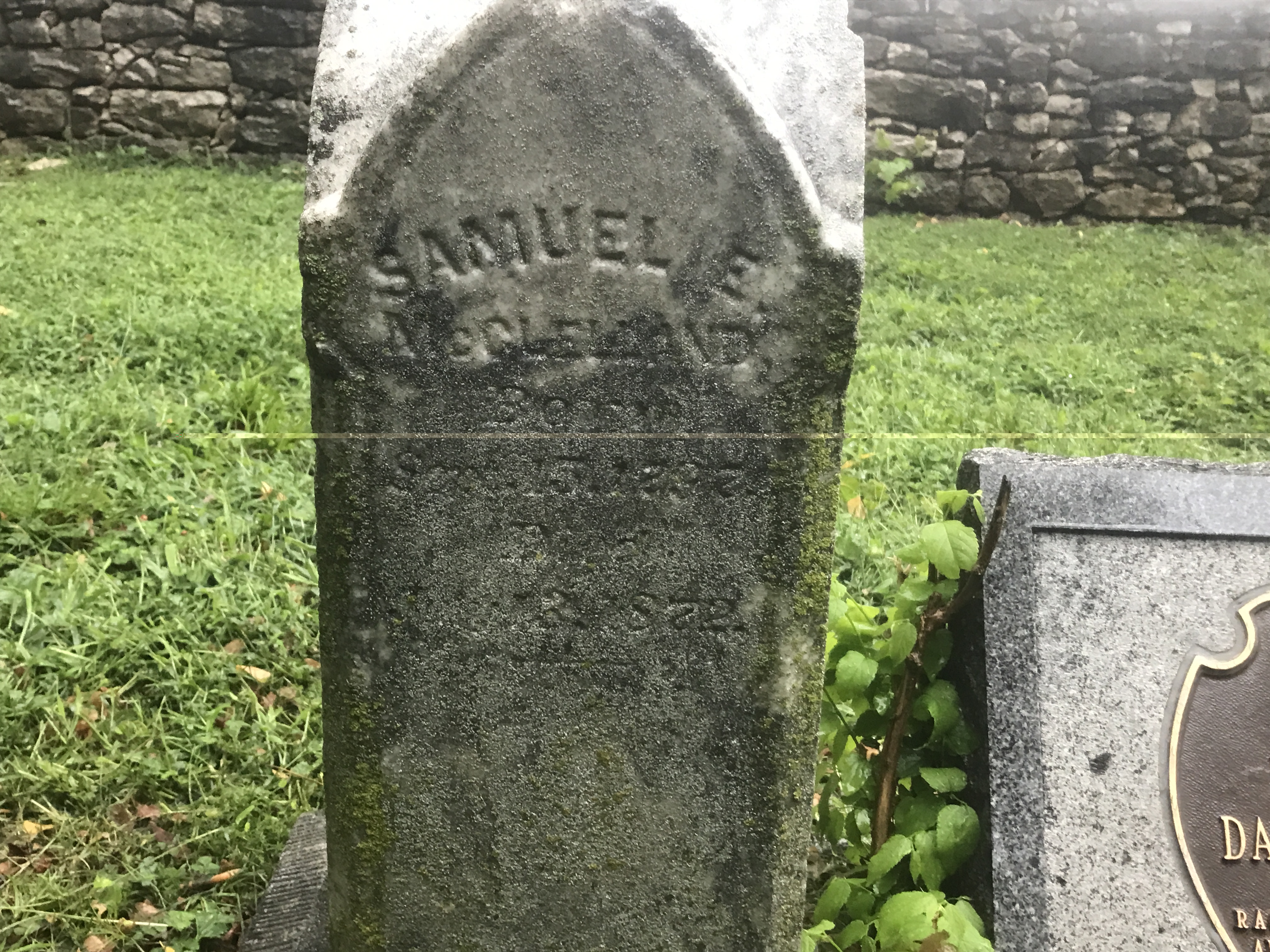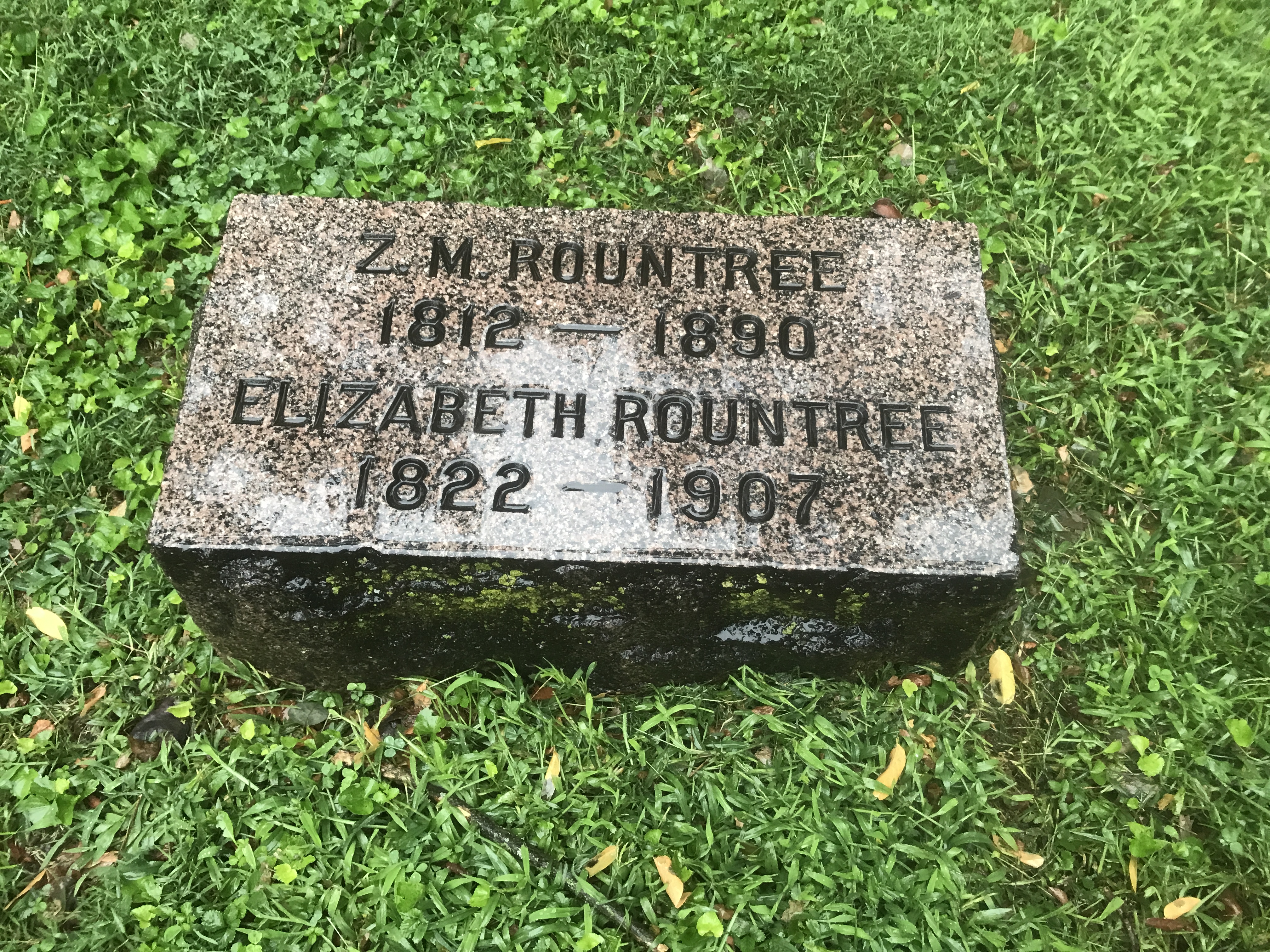Tucked away, almost hidden, at the end of West Bennett Street is a small cemetery enclosed by a stone wall.
It is the resting place of Joseph Rountree, one of the first white settlers of what would become Springfield, and an unknown number of his family members and, perhaps, people who were enslaved.

I learned of its existence last week while reading News-Leader archives; I was researching a completely different topic.
According to records on file with the Springfield-Greene County Library Center, 14 people are known to have been buried here, including the patriarch.
In 1994 radar was used on the site to search underground for soil disturbances. The results suggested 31 possible burials.
Other ground disturbances were found outside the cemetery wall, suggesting the gravesites of people who were enslaved. Rountree was a slave owner when he settled here in January 1831.
Expectation was park would be something more
In reading news stories about the cemetery, it is clear that this cemetery and park has not become what supporters and descendants originally wanted it to be become.
Old newspaper stories mention plans for a pavilion and historical displays detailing the history of the Rountrees in Springfield.
“We ran out of funding,” says Steve Kemm, a Rountree descendent. “It would have been nice, but it didn't happen. We finally turned it over to the city.”
The two-acre site is well maintained. The cemetery wall, which is not original, surrounds a dozen or so grave markers, most without words on them.

The cemetery is in Rountree Historic Park, which is a city park, although property records indicate the land is owned by the Rountree Historic Park Association. The park is listed by the city as an historic site.
Most Springfield historians credit John Polk Campbell with being Springfield's first white settler of what would become Springfield. Of course, native people lived here before Campbell arrived in March 1830. Campbell Avenue is named after him.
The second family to settle here is the Fulbrights.
Kemm contends that his relative, Joseph Rountree, was here first. He arrived, but then went back to Tennessee to gather his family and return, Kemm says.
Joseph Rountree and his wife, Nancy, arrived with nine children — six boys and three girls.
Even if Rountree didn't settle here first, he and Nancy are buried here and Campbell is not.
For years, I thought Campbell was buried at Maple Park cemetery because he has a monument there. But he's not. The person who works at the cemetery told me that years ago.
Campbell died on May 28, 1852, in Tahlequah, Cherokee territory, in Oklahoma, at age 48. I've read that he was on a business trip.
I do not know where Campbell is buried.
Hillcrest High students get involved
Joseph Rountree was a school teacher, as well as a farmer. He built the first two log cabin school houses in southwest Missouri. He was Springfield's first teacher.
Rountree Elementary School, built in 1917, is named after Newton M. Rountree, for many years head of one of the largest merchandising businesses in southwest Missouri. Newton was the grandson of Joseph Rountree.
The Rountree homestead and cemetery was forgotten and neglected until 1979.
At the main library I found a document that states:
“Luther Slavens and children visit the old Joseph Rountree Farmstead in April 1923 and find the property and family cemetery in deplorable condition.”

It took a group of Hillcrest High School students looking for a historical project to pursue to restore the cemetery in 1979. The grounds were overgrown and headstones had been toppled and some stolen.
Kemm tells me a few headstones were retrieved at either a sorority house or a fraternity house, where they had been taken for Halloween activities.
Ted Borgstadt, president of the Hillcrest student body in 1979, tells me he and several other Hillcrest students worked at the site for three to four weeks.
He is 62 now and lives in Fayetteville, Arkansas.
“Everything was overgrown,” he tells me.
According to a May 3, 1979 story in the News-Leader:
“First the students searched for the cemetery site, located on private property off West Bennett. They found a 50-by-60 foot plot hidden by trees and overgrown with weeds. Students then got to work on the research paper.

“Seven students and Hillcrest newspaper staffers researched the names of the 14 persons buried there. They scoured library books and got an abstract of the land title. They even secured a copy of Joseph Rountree's will, in which he requested the burial plot be maintained.”
The story states that Lawson A. Weaver, then the controlling owner of the land, granted permission for the Hillcrest students to restore the cemetery. Weaver said later that he did not know the cemetery was there when he bought the land in 1971.
I worried maybe he wasn't really buried there
In writing this story, I was momentarily confused by the fact that according to the website Find-a-Grave, Joseph Rountree and his wife Nancy Nichols Rountree are buried in Bowers Chapel Cemetery, in Urbana.
What? You mean Joseph Rountree is not buried in the family cemetery at the Joseph Rountree homestead?
But then I clicked on the grave marker for Joseph and Nancy that I saw on Find-a-Grave, and it states, “They lie in the old Rountree Cemetery near Springfield, Missouri.”
It's their daughter, Louise Amanda (Rountree) Slavens, who is buried in Urbana.
Ugly part of our Springfield history
Lucius Rountree was the third son of Joseph and and Nancy Rountree. He was an officer in the Union army during the Civil War and built a home on Mt. Vernon Road in 1844. He had a 240-acre farm.
The Rountrees were community leaders in Springfield's early days. One son, for example, served as a county judge.
But the name “Lucius A. Rountree” appears in a different story in a darker light.
In 2018, News-Leader reporter Giacomo Bologna wrote about a woman named Milly Sawyers, who was an enslaved person living in Springfield.
For the third time in her life, Sawyers had filed a “freedom suit” in 1835 in an effort to escape slavery. Sawyers filed the suit in Greene County. She sued after her owner beat her.
Her legal argument was that since she had lived in Ohio as a free person, she could not be enslaved in Missouri.
This time she won.
A year later, Sawyers was a free woman when a mob dragged her from a house in downtown Springfield and beat her.
One theory, according to the story, is that Springfield slave owners might have feared Sawyers was inspiring other Black men and Black women to seek their own freedom.
Springfield leader John Polk Campbell was there where Sawyers was taken from her home; he was charged with rioting.
Campbell's brother Junius, Springfield postmaster, was charged with attacking Sawyers, as was Lucius Rountree.
Another person with a familiar name, Sidney Ingram, was there, as well. He was charged with rioting. Ingram Mill Road is named after his grist mill.
It's unclear what happened in these criminal cases. Court documents have not survived. Historically, the defendants do not seem to have suffered. After all, the public beating of Milly Sawyers was unknown until Bologna's reporting in the News-Leader.
No one knows what happened to Milly Sawyers.
This is Pokin Around column No. 127.

